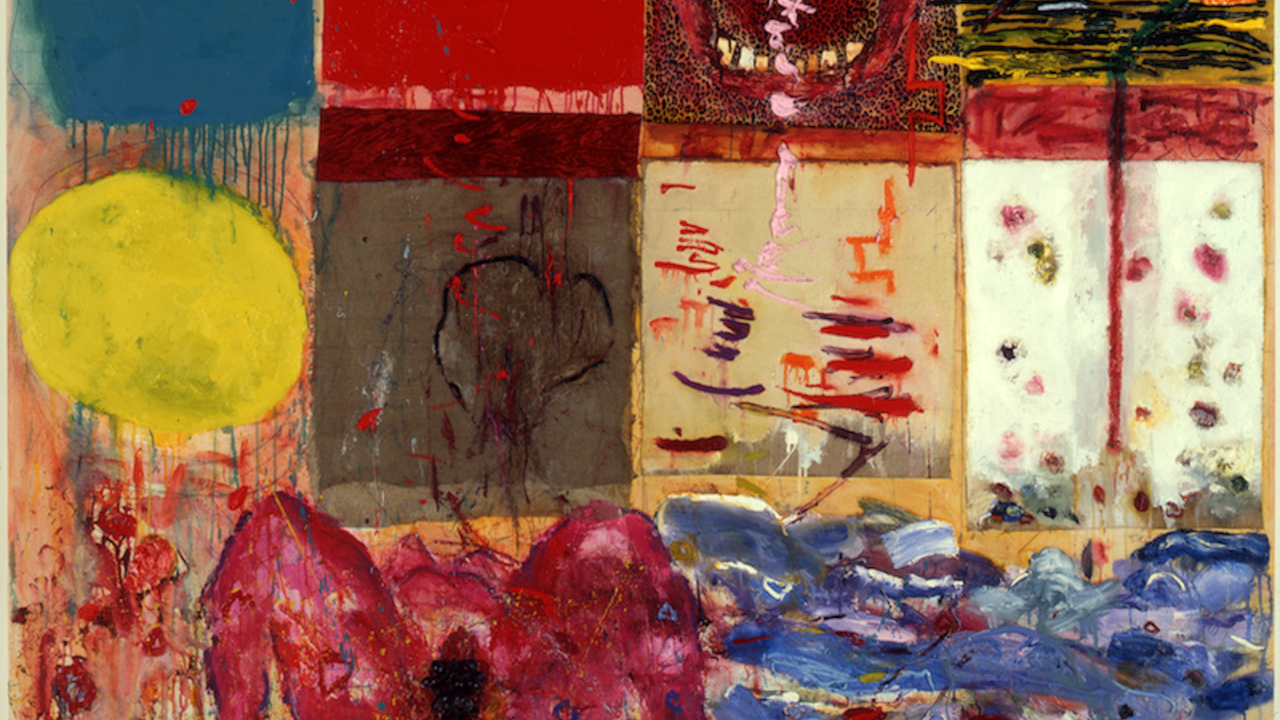John Armleder
de Pury & Luxembourg, Zurich, Switzerland
de Pury & Luxembourg, Zurich, Switzerland

John Armleder is the consummate consumer. In this exhibition of seven new wall paintings he seems to draw from an apparently endless formal repertoire, ranging from popular folklore and street culture to New Age mysticism, art history and Hollywood B-movies. When artists such as Sol Lewitt first started drawing directly on gallery walls, the gesture was ripe with utopian intentions. Each individual work was to be the site-specific unfolding of a single predetermined idea, as opposed to traditional painting, which was seen as decorative and commodified. Today, however, to borrow a phrase from Armleder, we are already much later.
The space at de Pury & Luxembourg is a classic corporate white cube of monumental proportions, but Armleder's wall paintings had something almost casual about them. They seemed playfully to deflect the architectural gravitas of their surroundings. Each wall was covered with a single motif, repeated in an all-over pattern. In the corner where Lubaantum (all works 2002), a golden skull motif, intersected with Anoprorhosis, a red polka-dot number, the lines of the two grids obviously didn't match. If the origin of this disregard for composition can be traced to Armleder's early career as a Fluxus artist in the late 1960s, his understanding of the realization of the work as the execution of a score also had the effect of transforming each individual piece into a kind of giant wallpaper sample. While classic 1960s wall paintings such as LeWitt's were executed directly on the wall specifically to highlight particular contexts, Armleder uses similar means to absolutely opposite ends. Following the principle of the grid to its logical conclusion, he arrives at the conflation of the wall painting with wallpaper, a statement of playful yet absolute contingency.
From his furniture sculptures of the 1980s to his recent scaffolding towers Armleder's work has been a consistent exploration of the idea of decor. In his writings he returns to an idea of decor as a metaphor for history, for the receding process of reminiscence and forgetting that inevitably transforms every cultural expression into a background element, a part of the 'big compost silo'. From this perspective the wall painting seems to be an ideal format since it already is, literally, a backdrop.
In Instant Replay Armleder used the iconic Roy Lichtenstein brushstroke as a motif. It also functioned as an ironic left-over from the previous exhibition in the gallery, as a reminder of the painting that hung there just a few weeks ago. For Lichtenstein the brushstroke was initially intended as a dig at the disingenuousness of the Abstract Expressionists' claim to a purely personal and auto-referential mark, to uncontaminated expressivity. In the past Armleder has rarely used such directly recognizable quotations, usually selecting forms generically reminiscent of particular styles and cultures (such as the outlined brains of Loasacae or the Day-Glo patterns of Optophone), presumably because they can more easily be treated as allegorically rich motifs than as one-to-one reproductions. Here the brushstroke, proliferating all over the gallery wall, became downright eerie. It was as if repetition, by its sheer mass of accumulation, had finally succeeded in separating the quotation from its original author, returning it to a general, amorphous state of total equivalence.























